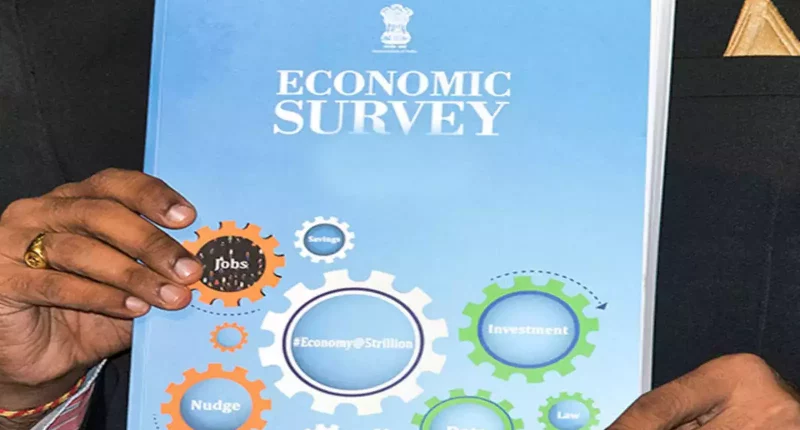Union Finance Minister, Smt Nirmala Sitharaman, tabled the Economic Survey 2022-2023 on Tuesday, 31st January 2023, before the Joint Session of the Parliament. India’s President, Smt Draupadi Murmu, also addressed the session for the first time.
Soon after, the Chief Economic Advisor, Dr V Anantha Nageshwaran, briefed the media around 2 P.M. with the details of the Economic Survey 2022-2023. These developments are ahead of the presentation of Union Budget 2023 by the FM at 11 A.M. on 1st February 2023.
- Indian economy quickly recovered from the aftermath of the pandemic. Its growth is backed by domestic demand and a pick-up in capital investment. Slowing growth and shrinking trade across the globe led to the loss of export stimulus during the second half of FY 2022-23.
- The Survey states that it is confident in India’s growth numbers as these are driven by strong fundamentals and are a strong assurance amidst the global recession.
- The Consumer Price Index (CPI) inflation did not deviate widely from the RBI’s tolerance range levels compared to many world economies.
- The Indian economy will grow 6% to 6.8% in the upcoming FY 2023-24. It is lower when compared to the projected 7% for the present financial year 2022-23.
- India’s Gross Domestic Product (GDP) is expected to grow at 6.5% in FY 2023-24, compared to the 7% growth rate estimated for the present financial year. A higher capex, credit growth to small businesses, private consumption, strengthening the corporate balance sheet, and migrant workers returning to cities will be the key drivers of GDP targets.
- The baseline scenario for economic growth for FY 2023-24 is 6.5%, and nominal growth is forecasted at 11% after accounting for inflation.
- The Indian rupee may feel pressure with the continuous widening of the Current Account Deficit (CAD). India has a sufficient foreign exchange or forex reserves to finance its Current Account Deficit (CAD) and to keep a check in the forex market for managing any rupee volatility.
- India stands fifth to be called the largest economy for the exchange rate. It takes the third position for the largest purchasing power parity.
- India showed strong growth in steel production during this year, with cumulative production of finished steel at 88 MT and consumption at 86 MT.
- The energy and power sectoral reforms will put India’s progress on to fast track. The government and private sector will increase the share of renewables to allow a calibrated energy transition.
Although India is facing a slowdown amidst the threat of global recession, many international institutions such as the World Bank, IMF, and OECD predict that the Indian economy is among the fastest growing. Earlier, the Reuters report had stated that the Economic Survey might fix the GDP growth between 6-6.8% for FY 2023-24.
The Survey covers the state of India’s economy in the ongoing financial year, FY 2022-23. It is segmented into Parts A and B. The first part generally contains all the major economic developments during the year and a macro review of the Indian economy.
The second part contains specific issues such as poverty, healthcare, social security, education, climate and human development. Further, it includes analytics on the overview of GDP growth, inflation rate and its projection, country’s forex reserves, and trade deficits.
The Economic Survey 2021-2022 took the ‘Agile Approach’, majorly concentrating on India’s economic response to the crisis created by the pandemic, such as safety-net buffers, real-time tracking of actual results, flexible responses and so on.
For the complete report on the Economic Survey 2022-23: https://assets1.cleartax-cdn.com/finfo/wg-utils/retool/d0ccfc51-3dec-476c-a949-e11a74358de6.pdf
For any clarifications/feedback on the topic, please contact the writer at annapoorna.m@cleartax.in
Annapoorna, popularly known as Anna, is an aspiring Chartered Accountant with a flair for GST. She spends most of her day Singing hymns to the tune of jee-es-tee! Well, not most of her day, just now and then.





